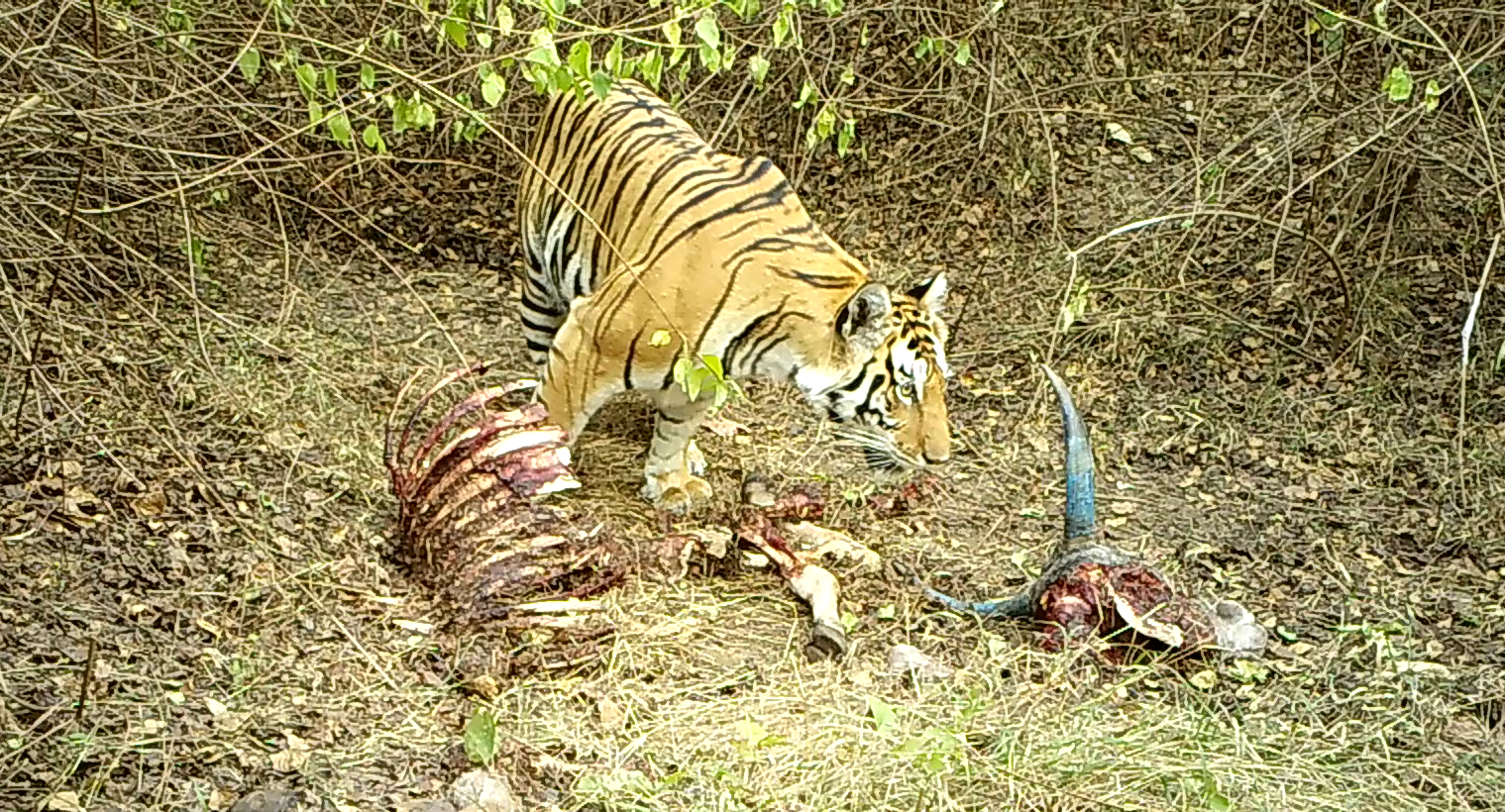Wildlife management is a balancing act, especially where predators like tigers share space with people and their livestock, tussling to co-exist in human-dominated, fragmented landscapes.
When livestock is found dead, suspicion quickly turns to the large carnivores, and the pressure mounts on forest officials to act. A recent study published in Biological Conservation by researchers from Prof. Uma Ramakrishnan’s group at the National Centre for Biological Sciences (NCBS), Bengaluru, is using trace DNA left at livestock kill sites to reliably identify not just the species, but the individual predator involved.
“In communities that live in proximity to large carnivores, livestock depredation might cause conservation challenges. Systematic understanding of individuals involved, based on reliable identification, in conflict is a critical first step towards a solution,” said Ramakrishnan, senior author of the study.
Managing human-wildlife conflict has long been a challenge for conservationists and forest departments. When livestock is killed, the immediate response by the forest department is often to identify and remove the suspected predator. Traditionally, this identification has relied on field signs—pugmarks, scat, or claw marks. However, these clues can be ambiguous, and sometimes the wrong animal is targeted. Removing a non-target individual can disrupt tiger social structures, potentially intensifying conflict and hampering conservation efforts.
To address this ambiguity, the NCBS team, in collaboration with Panthera and the Madhya Pradesh Forest Department, conducted a systematic investigation of 198 livestock kill sites across Kanha and Bandhavgarh Tiger Reserves—two of India’s most important tiger habitats. At each site, researchers collected three types of non-invasive genetic samples: saliva from bite and lick marks on the carcass, shed hair from vegetation and around the kill site, and scat from resting or feeding areas.
Researchers collected swabs of saliva samples from areas where the predator had bitten or licked the carcass, as these locations are most likely to retain trace amounts of the animal’s DNA. They gathered shed hair from the ground, nearby bushes, or entangled in the remains, as tigers often lose hair while feeding or dragging prey. The team collected scat samples from locations where the predator might have rested or fed after the kill. They used tiger-specific primers to detect tigers as a species and 123 single-nucleotide polymorphism (SNP) markers for individual-level identification.
The study found that all three sample types—saliva, shed hair, and scat—were highly effective for species-level identification, with per sample success rates exceeding 95%. For identifying individual tigers, shed hair was the most effective, followed by saliva and scat. Overall, individual tigers were successfully identified at 85% of the kill sites. The success of DNA identification depended on both the type of sample collected and the sampling season, with fresh and well-preserved samples giving the best results.
The team also examined how the season affected sample quality. Identification using saliva samples dropped by 30% in summer and 53% in the monsoon as compared to winter months. For shed hair, the decline was smaller—11% in summer and 37% in the monsoon. Shed hair samples consistently performed better across all seasons. Study suggests that saliva samples were more affected by seasonal changes than shed hair. This non-invasive sampling and site investigation helped the researchers reliably distinguish between true predators and potential scavengers, even in complex scenarios where multiple tigers were present at a single kill site.
To account for the complexities of predator behavior, such as multiple tigers visiting the same carcass or scavenging, researchers developed a classification framework to assign confidence in their identifications. They categorized each case as:
- A true predator (high confidence, based on direct evidence like saliva or hair at the predation bite site usually in the neck),
- A circumstantial predator (medium confidence, based on all other samples found near the carcass),
- Or predator uncertain (low confidence, when there is less evidence, can be from a scavenger or was otherwise ambiguous).
Of the 198 cases studied, 72 were classified with high confidence, 34 with medium confidence, and 49 with low confidence.
“Genetic samples are often the only true evidence of a predation event and are therefore vital. While identification is possible, there remains some possibility of misidentification, especially when multiple tigers are present at the kill site. That’s why it’s important to assign confidence levels in identification. We hope that such a classification scheme will help better represent the level of confidence provided by the genetic tools and further evidence-based conflict management” said Himanshu Chhattani, the study’s lead author.
By accurately identifying the individual tiger involved, interventions can be more precisely targeted, reducing the risk of removing the wrong animal. Evidence-based decisions can improve relationships between local communities and conservation authorities, fostering coexistence. The study also highlights the importance of systematic, scientific approaches in wildlife management. As genetic technologies become more accessible, their use could become standard practice in managing conflicts involving not just tigers, but other large carnivores worldwide.
The researchers recommend creating a reference genetic database, especially for individual animals involved in conflict. Since genetic data alone cannot visually identify animals, this database should be linked to photos or other physical IDs. Ramakrishnan and team suggest that this can be done by collecting DNA from kill sites and using camera traps, as well as collecting samples during sightings or captures. Such a database would help improve individual identification and support more targeted, evidence-based conflict management.
“As we celebrate the success of tiger recovery, the growing challenge of human-tiger conflict demands urgent attention. To address this effectively, interventions must be grounded in scientific evidence and rigorous methodologies. The genetic approaches outlined in this paper offer a reliable means of identifying individuals involved in conflicts, paving the way for more informed and strategic resolutions”, said Sanjay Shukla, former Principal Chief Conservator of Forests, Madhya Pradesh.










0 Comments